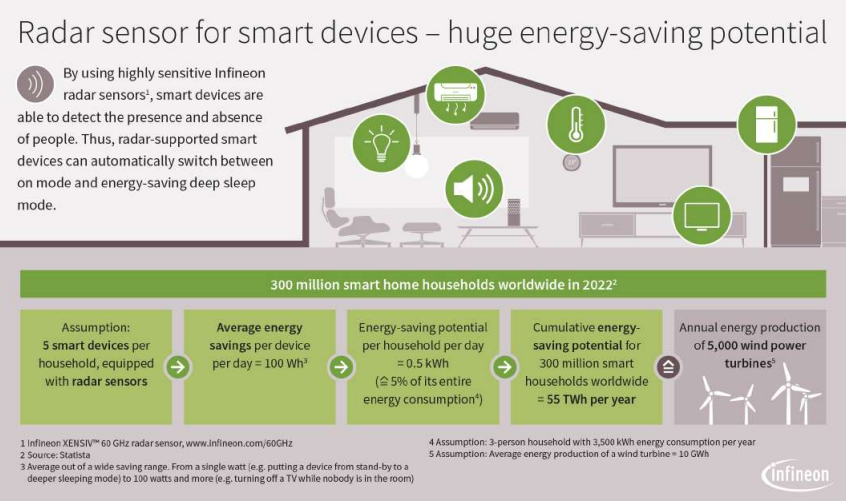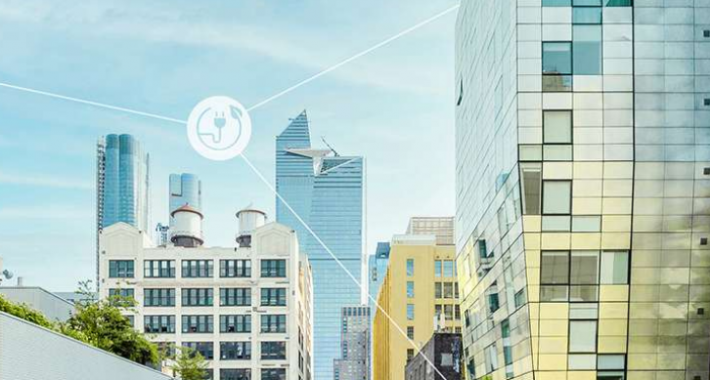Climate change is the most crucial challenge of our time. The growing number of extreme weather events makes this evident, to cite just one example. We have to stop heating our planet by emitting CO2 if we want to maintain the same standard of living or achieve a higher level of life quality. Decarbonisation and digitalisation show the way to break out of the old vicious circle of economic growth and a higher standard of living at the expense of the environment; they are interlinked and offer great potential for the challenges we are facing. This is not just about lifestyle but is also a necessity for the well-being of humans. The objective, explain Infineon’s Thomas Rosteck and Adam White, is to slow down or even stop climate change, while at the same time mitigating its effects as far as possible. But countermeasures are not only necessary for the global climate, they may also be relevant to personal health in the shorter term.
Microelectronics is a key lever in reducing global CO2 emissions while utilising limited resources in the most efficient possible way. Semiconductor technologies give us comprehensive energy efficiency solutions that help minimise losses, generate clean and green energy, enable higher device and application performance and make energy use responsible and smart. They make renewable energy more reliable by converting to green electricity very efficiently so that we can stop burning fossil fuels. They make our grids smarter to balance energy production, transmission and storage and thus help compensate the differences between day and night or north and south. And: semiconductors help manage and consume available energy more efficiently by enabling IoT applications. IoT technologies have proven to be crucial in every step of generation, transmission, storage and especially consumption of electricity.
Semiconductor solutions as an elementary component of IoT
Semiconductors connect the real with the digital world and thus make the IoT happen. This takes five steps: sense, compute, actuate, connect and secure.
- Sensors capture environmental information and convert it into digital data. Thus, they mark the beginning of any smart action, since they can measure a wide variety of data such as temperature, presence of people and more.
- Microcontrollers make products smart by processing the data and initiating actions based on machine learning. • Actuators convert these control signals into action, such as motion, for example, turning a fan, heat and switching lights on and off.
- Connectivity solutions such as 5G, Wi-Fi and Bluetooth link devices to each other and to cloud services. These solutions are vital to making devices talk to one another and execute corresponding actions.
- Security is indispensable in preventing fake or manipulated data from entering the system and initiating unintended actions. In addition, all IoT applications need to be protected from becoming gateways for unwanted access to networks and infrastructures.
Smart building applications help improve the CO2 footprint
Residential, public and office buildings account for one of the largest shares in global energy demand. In the EU, buildings are responsible for 40% of energy consumption and 36% of CO2 emissions1. However, intelligent sensors make it possible to reduce their energy consumption by 30% and to turn buildings into smart buildings.2 In addition to that, IoT technologies make it possible to improve heat, light and fresh air management and to monitor, communicate and trigger actions. And beyond shutters, air conditioners and heating, connected and energy-efficient home appliances, entertainment, lighting and home automation also help save energy. Ultimately, smart home and smart building solutions help cut operating costs, improve security by dovetailing different systems and technologies, increase comfort and make energy use more efficient at the same time.
It’s worth taking a closer look at a concrete example, such as a smart air conditioner: This year temperatures in many regions went up to values that are difficult to bear for many people or even dangerous to their health. Therefore, the demand for air conditioning is rising. However, this also increases power consumption. Climate change is making the issue even more urgent. For instance, researchers at Penn State University warn that in the southern US demand for air conditioning could exceed available energy in the early 2030s if neither energy infrastructure nor air conditioner efficiency is improved. The growing number of heat waves and the extensive need for air conditioning even bear an additional risk of blackouts, which means we urgently need solutions.
A smart air conditioner solution is equipped with semiconductors that see, hear, feel and understand its environment and is connected to the Internet of Things. Sensors detect the location and number of people within a room or space, turning the air conditioner on and off or adjusting the fan speed and swing mode depending on the location of the occupants. The air conditioner can measure temperature, CO2 concentration and air quality to decide when to supply fresh and cool air. Direct processing of the data generated is therefore indispensable and takes place on a constantly increasing number of computing devices. Artificial intelligence complements this by deciding whether the data needs to be transmitted securely to the cloud or whether the data could or even must be processed directly at the edge. Ultimately all this information and these processes can be used to automate the control system in order to reduce the energy consumption of the air conditioning system – while increasing quality of life at the same time. Thus, the IoT can turn an air conditioner from a device into a smart service that optimises living conditions. All of this heralds a game-changing user experience and unprecedented levels of energy efficiency.
Smart energy management in buildings improves our energy consumption behaviour
IoT technologies help us successfully manage our behavioral change towards a more conscious and effective use of energy. Smart energy management in connected homes and buildings can enable additional energy efficiency. In addition to the pure energy consumption of individual smart devices, the interconnection of smart things opens up far greater potential for making buildings greener and applications more sustainable. For example, based on the data generated by all smart home devices in your home the system can learn your personal temperature preferences in different situations and can make you feel more comfortable in your own home while simultaneously saving a lot of energy.

Using the unlimited potential of sun and wind requires combining different devices in a smart system where everything communicates with everything else. Optimised load shifting to ensure the best possible utilisation of electricity generation and its use at the right time is therefore a major lever in energy management, given the great fluctuation uncertainties of renewable energy sources – and is only conveniently possible thanks to intelligent devices. For example, intelligent smart home networks could help automatically run washing machines and dryers when solar power is available, or store the power for use at night according to user demand. Edge AI is key in unleashing the potential of vastly reduced processing latency, thus enabling reduced energy consumptions.
This is a very reliable way to simultaneously reduce costs and emissions while driving the transition to renewable energy. Furthermore, semiconductors integrated in radar sensors help avoid unnecessary energy consumption by turning off lights, heating and air conditioning when no one is in the room. These sensors reliably enable presence detection without identifying individuals. Loss of privacy is often cited as a concern in the context of camera-based motion detection in particular, since camera-based systems invade private spaces, meaning users do not fully trust them. In addition, smart thermostats and learning algorithms manage usage in the most intelligent manner, significantly reducing unneeded energy consumption.
Another important use case for IoT technologies is predictive maintenance. Machine downtime can cost companies and consumers a lot of money. Systems that are not running optimally often consume more energy before breaking down. These are just two good reasons to avoid accidental downtimes. This is what makes predictive maintenance so important. It provides the ability to optimise maintenance tasks in real time throughout the life of the system, maximising asset life and operational flows without interrupting operations.
However, it is important to remember that predictive maintenance, or even better, predictive maintenance services, are built on information generated using millions of data points, sensors and machines. Many companies are already using predictive maintenance solutions which continuously evaluate data from machinery and compare it with past samples. This makes it possible to detect impending malfunctions before they actually occur.
A typical use case is the maintenance of heating, ventilation and air conditioning (HVAC) systems where sensors monitor current, vibration and airflow in motors, compressors and fans. A comprehensive IoT solution combines sensors with microcontrollers, connectivity solutions and algorithms for data generation, transmission and big data analysis in the cloud to predict maintenance needs at the edge. Nevertheless, security is becoming a relevant prerequisite, enabling secure collaboration while protecting the manufacturing process and entire value chain.
All these parts are building blocks for reliable predictive maintenance applications. However, they also need to be protected against unauthorised access and against manipulation. Useful algorithms can only be found by analysing trustworthy data and using artificial intelligence as well as machine learning.
Reliable and trustworthy data forms the basis of a digital twin, representing for example a machine or a smart building. The data lets us simulate the interaction of people with their environment, their offices, meeting rooms and cafeterias and ultimately optimise the control of temperature, light and fresh air. Corresponding behavioral models help in understanding the derivations of the lifetime of such a system. That makes it possible to detect, recognise and understand every bias in operation and to predict – or, even better, prevent – the moment the system or a part has to be repaired, renewed or exchanged.
Comment on this article below or via Twitter: @IoTNow_OR @jcIoTnow










